Last updated on February 13, 2024
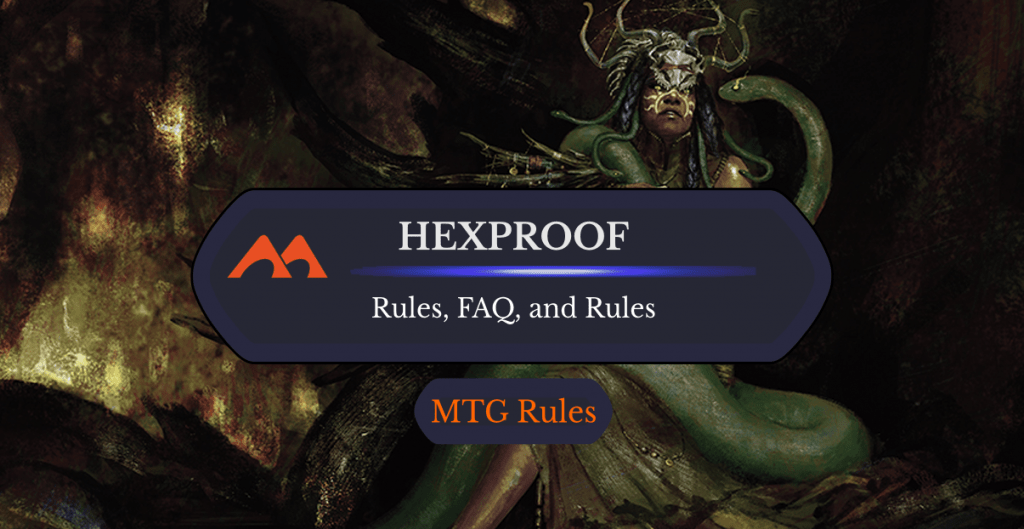
Saryth, the Viper's Fang | Illustration by Igor Kieryluk
Magic is a game where words are very important. The words a card uses and how it uses them is central to how that card works. Cards have what we know as “keyword abilities” to help make this easier to grasp. If a card like Soulflayer had every single one of its abilities explained in detail, its reminder text would be as long as a book.
I bet most of us don’t even know how many keywords there actually are in the game. If you asked me, I would’ve said something around 50 or 60. There’s actually hundreds!. I dare say that hexproof is easily one of the most well-known ones. And possibly one of the most hated, at least every time you have to play against it.
But why is this ability so well known—and sometimes hated? Let’s talk about that.
How Does Hexproof Work?

Blossoming Calm | Illustration by Michael C. Hayes
In short, hexproof just means that a card can't be targeted by any spell or ability controlled by an opponent.
There are a lot of spells and abilities in Magic that prompt you to “target” something. Depending on the ability, the target can be a creature, a planeswalker, a player, an enchantment, a spell on the stack, or an artifact. Basically almost anything in the game can be a target. Unless it has hexproof.
Both permanents and players can have hexproof, and things with hexproof can’t be chosen as targets by your opponents. So if you control an Aven Fleetwing and your opponent casts Shock, they can’t even put the spell on the stack pointed at your creature.
The other two abilities that give a similar type of protection are shroud and, appropriately, protection. The main difference between hexproof and these is that both protection and shroud also stop you from targeting your own permanents. Hexproof only affects spells and abilities controlled by opponents, so you can still enchant, equip, or cast spells on your own creatures with hexproof.
A Brief History of Hexproof
I remember when the hexproof keyword first appeared. I’d only been playing Magic for a few years and I thought shroud was one of the greatest abilities out there. I mean, I wasn’t entirely wrong, but it’s not as broken as I used to think. And then hexproof came along to rub my mistake in my face. It was shroud, but objectively better.
I’m actually surprised how far back the first instance of the ability goes. This was way before it got a keyword and even before shroud had its own keyword. The first cards with this ability are from Portal Three Kingdoms. That came out back in 1999. It would take another 12 years for hexproof to get a keyword.

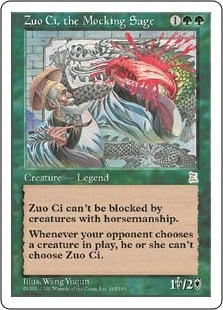
The first cards to have this ability were Taoist Hermit and Zuo Ci, the Mocking Sage. Some cards had the ability here and there from that point on. It wasn’t until 2011’s Duels of the Planeswalkers 2012 video game that the ability was finally granted a keyword. The first physical sets to feature the keyword were Magic 2012 and Commander 2011, both released the same year as the Duels game.
Hexproof has been considered an evergreen ability ever since then and has showed up on a ton of cards in almost every set. Since it's evergreen, you can expect to see it in just about every set on at least a few cards. It’s clearly a keyword that will show up for a while yet.
Is Hexproof Gone from Magic? Why?
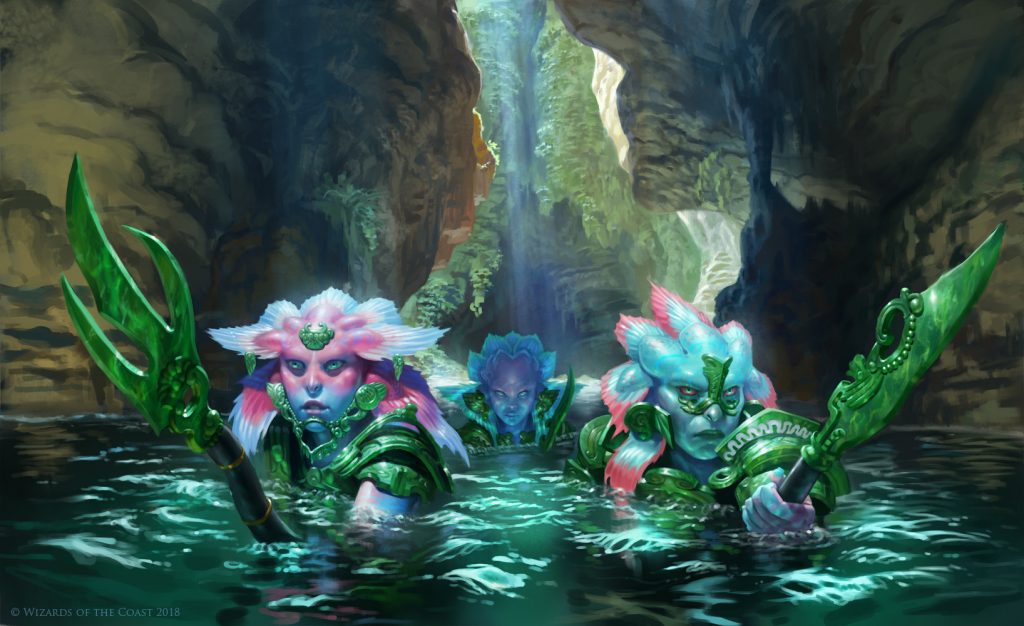
Aquatic Incursion | Illustration by Jason Rainville
Yes and no. It's always going to be a part of the game, but there’s been a slight shift in the way the ability is functionally used.
Hexproof is used not as a keyword for the card but rather something it gives to you or other creatures you control. Most new cards with the keyword, like Guardian Augmenter and Keen-Eared Sentry, give the ability to other creatures you control or even to you, rather than having it for themselves.
This change is directly related to the creation of the “ward” mechanic. The design team at Wizards felt like hexproof was a little too powerful and maybe a tad unfun. A creature with hexproof is pretty much impossible to get rid of. And it can get even worse.
I remember the first time I had to face off against a monstrous Fleecemane Lion. It just wasn’t fun. It wasn’t a challenge to work around its abilities to see if I could get rid of it somehow. I just had to hope that my creatures were big enough to block it. You’re not gonna immediately lose the game as soon as it enters the battlefield, but it still takes the game in a more frustrating direction. This happens a lot with creatures that have hexproof. They become insanely hard to deal with in a very unfun way if they have any other sort of evasion.
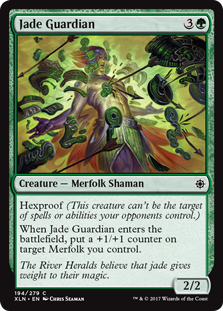

The idea behind ward isn’t to completely replace hexproof, just to make it the standard ability for creatures that only give it to themselves. So hexproof still exists in cards like the ones I’ve mentioned, while ward is now typically used to give extra protection to individual creatures. Your opponents can still target your creatures with ward, but their spells get countered unless they pay an extra price.
While hexproof isn’t gone from Magic, it has been significantly minimized and shares its place with the ward ability.
What Is “Hexproof From”?

Arcane Lighthouse | Illustration by Igor Kieryluk
In an attempt to make the mechanic a little less busted and before the whole ward thing, some cards had “hexproof from” specific colors or card types. This basically means that the card can’t be targeted by the specified color/type. It makes it even more similar to protection, minus the protection from combat damage.
A card like Eradicator Valkyrie is completely protected from any planeswalker ability that would target it. You can still target it with abilities from any other permanents as well as with spells. This was an attempt to keep hexproof working but take away some of its power so the playing field was a little more even.
What Does Hexproof Protect Against?

Asceticism | Illustration by Daarken
Hexproof protects against any spells or abilities that target. It doesn’t protect from a specific color, card type, or effect, but from the word “target.” Whenever a spell or ability would let a player choose a target, permanents and players that have hexproof are protected from that targeting action.
Does Hexproof Protect from Board Wipes?
The short answer is a simple “no,” hexproof doesn’t protect from board wipes. The most basic board wipe of all is Day of Judgment. The text on the card says, “destroy all creatures.” Most board wipes have similar text along with something else or something along those lines; exile all creatures, deal X damage to all creatures, etc. The key here is that none of these cards choose a target. As long as the card doesn’t need to target the permanent with hexproof, it affects it just like it’d affect any other permanent.
What Does Hexproof Not Protect Against?
Hexproof is basically useless against any effect that doesn’t target the creature or player. So sweepers and sacrifice effects aren’t protected against. Neither are spells or abilities that let you interact with the card with hexproof in the graveyard or library. Basically any effect that doesn’t use the word “target” works on cards with hexproof.

What Happens if a Creature Gains Hexproof After Being Targeted?

Bristling Hydra | Illustration by Chris Rahn
If your opponent targets your creature with a spell and you respond by giving it hexproof, then your hexproof effect will activate first. This makes the targeting of your creature illegal and your opponent’s spell will have no effect. So hexproof can absolutely be used as a response to removal or damage spells.
Does Hexproof Protect from Spells that Say “Each”?
No, hexproof doesn’t protect from “each” spells. As long as the spell doesn’t specifically target a specific permanent or player with hexproof, then the ability doesn't help you.
Can You Fight a Creature with Hexproof?
If it has hexproof then it can’t be targeted. “Fight” makes you target two specific creatures. Usually one of your own and one of your opponents’. So you’d need to target an opponent’s creature, and the key here is “target.”
Can a Creature with Hexproof Be Exiled?
As long as you’re exiling the hexproof creature with a spell or ability that says “exile each creature” or “exile all creatures,” then yes. If you’re trying exile a creature with something like Swords to Plowshares, then it won’t work.
Does Hexproof Prevent Blocking and Damage?

Swiftfoot Boots | Illustration by Manuel Castañón
No, hexproof doesn’t prevent blocking or damage. The ability you need to prevent blocking and damage is protection, which prevents creatures with some specific quality (usually a color) from being able to block, damage, and basically affect the protected creature in any way.
Can You Counter a Hexproof Creature?
Yes, you can counter a hexproof creature. A creature spell on the stack counts as a spell and not as a permanent. Hexproof is an ability that affects the card as long as it’s a permanent, so you can absolutely counter it.
Can You Be Attacked if You Have Hexproof?
Attacking doesn’t involve targeting. What’s more, hexproof prevents you from being the target of spells or abilities, and attacking is none of those. So while having hexproof can be an incredible advantage, it won’t prevent attacks.
Does Hexproof Stop Deathtouch?
No, hexproof will not stop deathtouch. Hexproof simply prevents it from being targeted by spells or abilities. Deathtouch isn't a targeting ability; it makes damage lethal regardless of the creature's toughness. Only indestructible can stop a deathtouch creature from killing another with combat damage.
Hexproof vs. Shroud vs. Protection vs. Ward
All four of these abilities work in pretty similar ways and give your creatures a significant amount of protection. So what’s the difference and which is better? Let’s first take a quick look at what each of them does.
Shroud
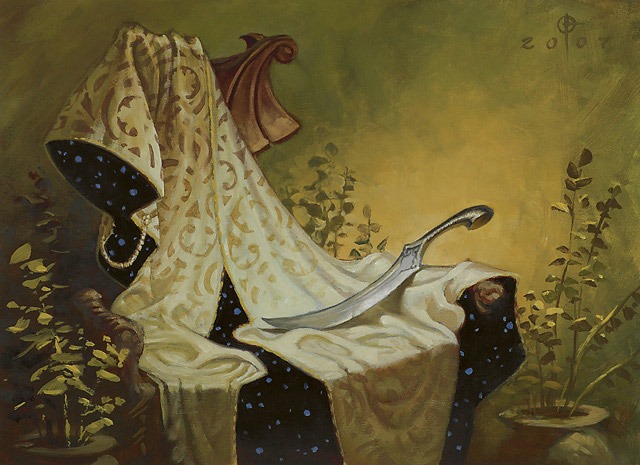
Cloak and Dagger | Illustration by Daren Bader
Shroud is a keyword ability that makes it so that a creature can’t be targeted. This means your opponents can’t target it, and neither can you. It gives your creatures a pretty significant amount of protection but it also means a pretty strong drawback if you play equipment, auras, or any kind of buffing spells.
Hexproof

Ancient of the Equinox | Illustration by Jaime Jones
I think I’ve gone into hexproof in enough depth already, but TLDR: hexproof is essentially the same as shroud except you can still target your own creatures with spells and abilities while your opponents can’t. It’s a stronger version of the same effect.
Protection

Progenitus | Illustration by Jaime Jones
Protection is an ability that specifies what the creature is being protected from. It’s usually from specific colors, but it can be from card types like creatures or artifacts, or it can be Progenitus which is absolutely fascinating to me.
Protection makes a creature almost immune to the specified thing. Let’s use the example of colors, since it’s the most common. A creature with protection from black can’t be damaged, enchanted, equipped, blocked, or targeted by anything black. A card with protection is immune to anything that has the specified quality as long as it’s interacting with it directly. Protection doesn’t work on things like board wipes since it’s not doing any of those things.
Ward

Adrix and Nev, Twincasters | Illustration by Andrew Mar
This ability was introduced with the release of Strixhaven. It essentially counters any spell or ability that targets the creature with ward unless its controller pays a specified cost. Ward varies from paying mana to life to cards. The card basically forces the owner of the spell to take some form of disadvantage if they don’t want their spell countered.
Winner, Winner
These abilities all serve different purposes. I think the worst of them is shroud since it’s just hexproof, but not as good. It’s actually been dropped from printing in new cards since the guys at WotC think it wouldn’t make sense to use it when hexproof is around (and objectively better).
That’s also pretty telling on why ward exists. Hexproof can be too good at times. It can be extremely hard to deal with and become annoying. I think the state things are in now is the closest to ideal we’ll get. Creatures can have ward with various costs which gives them great protection but doesn’t make them impossible to interact with. On the flipside, you have creatures and enchantments that can give hexproof to other creatures while they can still be targeted.
This also allows you to build some interesting combos and forces your opponent to use their resources in ways that they maybe didn’t expect or want to. And protection only shows up occasionally, so it doesn’t run the risk of becoming too pervasive or broken and it’s still an amazing way to defend your creatures. Teferi's Protection isn’t a Commander staple for nothing.
The Best Hexproof Cards
There are a lot of cards with hexproof out there. And I do mean a lot. Here I’ve selected some that I think are particularly good, either thanks to their hexproof or their other abilities. Probably a combination of both.
Swiftfoot Boots
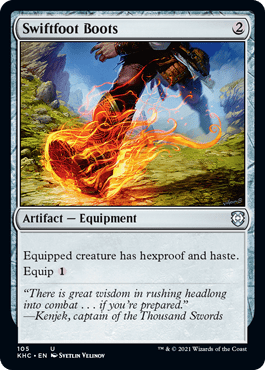
Swiftfoot Boots is an absolute staple in Commander. Almost every deck that cares about having your commander in play will try to fit in this card. It’s easy protection from any removal your opponents might try to cast against your commander and it’s not particularly costly. Just an all-around amazing card.
Asceticism & Privileged Position
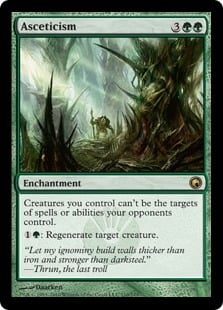
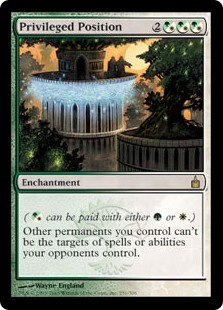
I’m putting these two together because they’re pretty similar. I think Asceticism is better because the amount of colored mana it needs is smaller and it also allows you to regenerate your creatures. Privileged Position has an advantage in that it allows you to play it with white mana which makes it a little more versatile.
Uril, the Miststalker

I think Uril, the Miststalker can be a really fun commander in enchantment decks, but I also really enjoy how its whole design is a reminder of how hexproof is shroud, but better. It can’t be targeted by your opponents and its second ability makes it stronger for every aura you’ve attached to it. You’re rubbing the fact that you can target it and they can’t in your opponent’s face.
It's also a great commander for Voltron decks.
Leyline of Sanctity
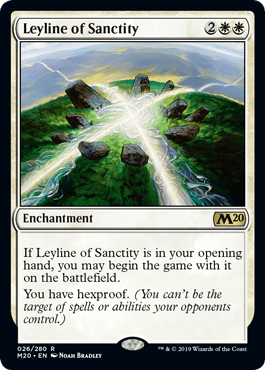
I was torn between this card and Aegis of the Gods. I prefer Leyline of Sanctity since it’s usually harder to deal with. The fact that you can start the game with it on the battlefield is also a pretty solid bonus.
Having hexproof as a player has a lot of advantages. You make almost all mill decks useless since most of the cards that mill target you as a player. You also annoy the hell out of burn decks that use damage spells to win. It’s an all-around great ability to have as a player.
Saryth, the Viper’s Fang
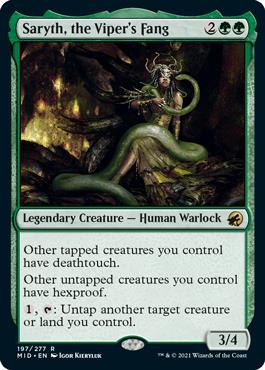
Saryth, the Viper's Fang is absolutely amazing. It’s not broken and fits perfectly in decks like the ones built around Fynn, the Fangbearer.
You can throw in creatures with trample or other evasion skills and attack and give them deathtouch while Fynn stays back and has hexproof to make sure you can place those poison counters. I think this card is gonna work great in Standard.
Heroic Intervention
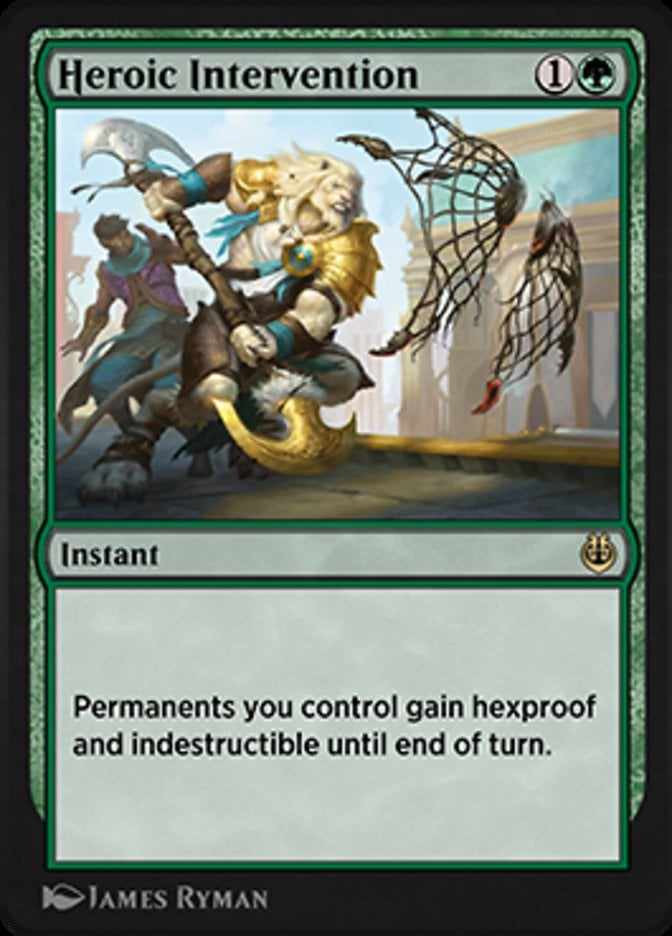
Heroic Intervention is an incredible piece of tech for green decks looking to maintain their board presence, and the additional coverage of giving you hexproof also insulates you from many of the infinite combos out there. All around, this is one of the best protection-esque spells out there, and I can't think of a reason to not play this card in just about every green deck.
Wrap Up
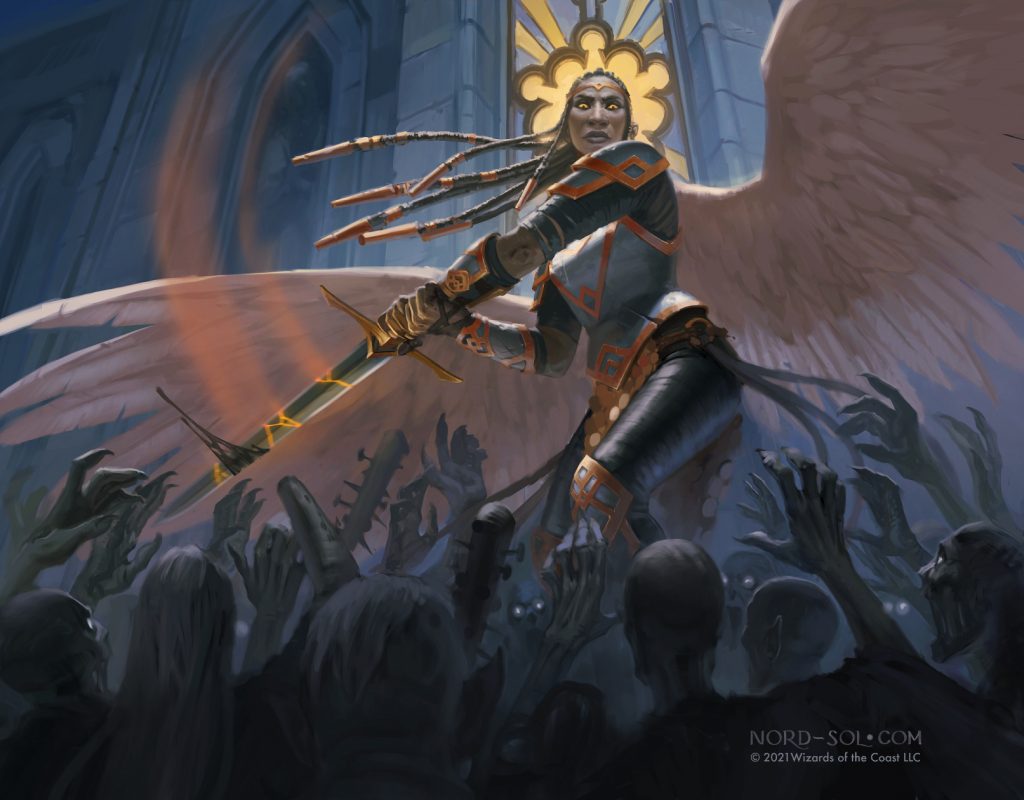
Angelic Enforcer | Illustration by Irina Nordsol
So there you have it! I think hexproof is a really strong ability and it's great when you’re the one playing it. But playing against hexproof is always a pain and can become boring very fast.
Restraining it too effects like “other creatures you control gain hexproof” and “you have hexproof” is a much better way to use the ability. I love ward as a replacement; it brings a high level of protection while still being highly interactive and encouraging more strategic thinking in the game.
What do you think? Do you enjoy the mechanic? I know a lot of players dislike it and consider it highly un-interactive and unfun. I mostly agree with that, but it can still be used in more fun ways. If you disagree and like it, feel free to leave a comment proving me wrong! And while you think of ways to do that, feel free to check out our blog and our Twitter for more content like this.
That’s all from me for now. I’ll see you in the next one!
Follow Draftsim for awesome articles and set updates:
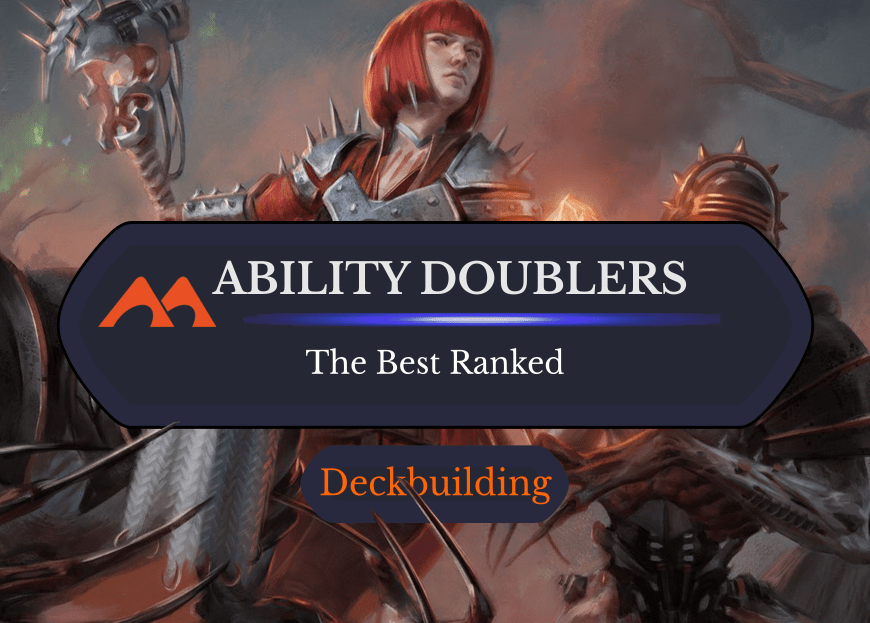
1 Comment
If you’re going to remove hexproof, then I think a worse function that is more powerful “indestructible” should be removed first. Hexproof can be killed as a blocker, damaging everything, board wipes, etc. Indestructible can only be killed by exile, or reducing its toughness to less than one. No other ways.
Add Comment